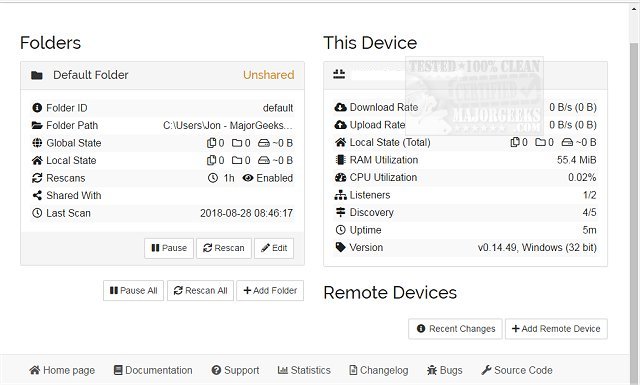Syncthing version 1.29.6 has been released, continuing its mission as a portable and open-source alternative to proprietary file synchronization and cloud services. Designed with a focus on safety, security, and decentralization, Syncthing enables seamless file synchronization between multiple computers while minimizing the need for user interaction. Its browser-based graphical user interface (GUI) allows users to easily configure and monitor their file-sharing activities.
One of the key advantages of Syncthing is the control it offers users over their data. Unlike many other file-sharing applications, Syncthing does not store user data on third-party servers, ensuring that users maintain ownership and privacy. All data transmissions are secured using Transport Layer Security (TLS), and each connected device, or node, is authenticated through robust cryptographic certificates. This ensures that only authorized devices can join a user's network and access shared files.
As Syncthing evolves, it continues to prioritize user autonomy and security in file sharing. The latest update and its features not only enhance performance but also reinforce its commitment to being a reliable and secure solution for users looking to manage their files without relying on cloud services.
In addition to its core functionalities, Syncthing's open-source nature allows developers to contribute to its ongoing improvement, ensuring that the software remains up-to-date with the latest security standards and user needs. This collaborative approach not only fosters innovation but also builds a community around the software, further enhancing its credibility and reliability in the realm of file synchronization. Users looking to delve deeper can explore Syncthing's documentation for advanced configuration options, tutorials, and best practices for secure file sharing
One of the key advantages of Syncthing is the control it offers users over their data. Unlike many other file-sharing applications, Syncthing does not store user data on third-party servers, ensuring that users maintain ownership and privacy. All data transmissions are secured using Transport Layer Security (TLS), and each connected device, or node, is authenticated through robust cryptographic certificates. This ensures that only authorized devices can join a user's network and access shared files.
As Syncthing evolves, it continues to prioritize user autonomy and security in file sharing. The latest update and its features not only enhance performance but also reinforce its commitment to being a reliable and secure solution for users looking to manage their files without relying on cloud services.
In addition to its core functionalities, Syncthing's open-source nature allows developers to contribute to its ongoing improvement, ensuring that the software remains up-to-date with the latest security standards and user needs. This collaborative approach not only fosters innovation but also builds a community around the software, further enhancing its credibility and reliability in the realm of file synchronization. Users looking to delve deeper can explore Syncthing's documentation for advanced configuration options, tutorials, and best practices for secure file sharing
Syncthing 1.29.6 released
Syncthing is a portable Open Source replacement from proprietary sync and cloud services designed to be safe, secure, and decentralized.


